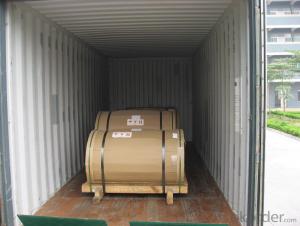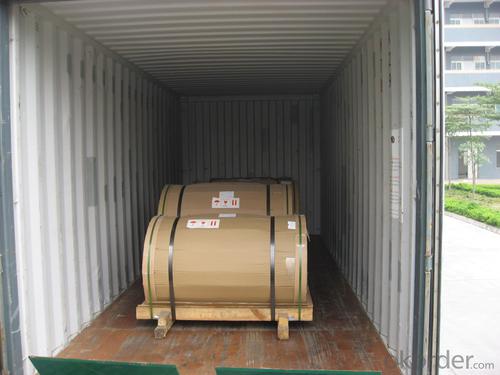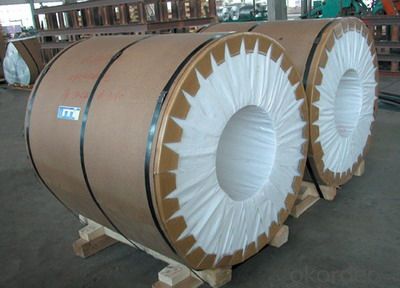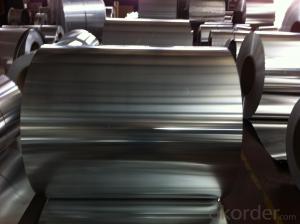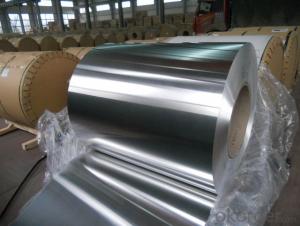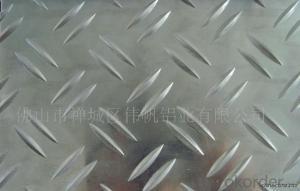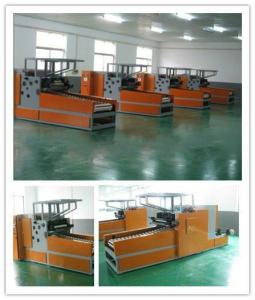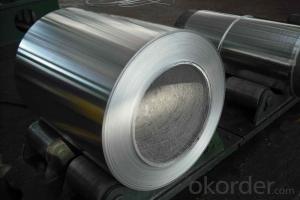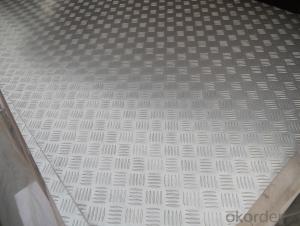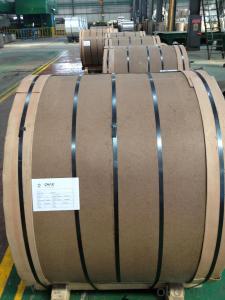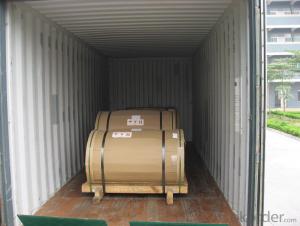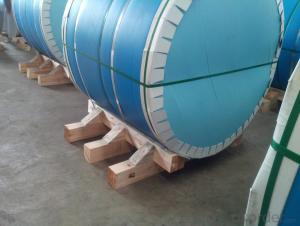Re-Passed Aluminum Sheets Portland SMS Rolling Aluminium Coils
- Loading Port:
- Shanghai
- Payment Terms:
- TT OR LC
- Min Order Qty:
- 5 m.t.
- Supply Capability:
- 50000 m.t./month
OKorder Service Pledge
OKorder Financial Service
You Might Also Like
Specification
1.Structure of SMS Rolling Aluminium Coils for Re-Passed
SMS Rolling Aluminium Coils for Re-Passed is one semi-finished aluminium material. This strip can be rolled down to aluminium coil,sheet,circle ect. The alloy AA1050 is widly used in building, industry ect. Its weight is much lower than steel. So many customers choosed aluminium material instead of steel.
2. Main features of SMS Rolling Aluminium Coils for Re-Passed
a.Competitive price---We have our own mills and can produce mill finished aluminium coils, so we can control the production cost better.
b.Professional after-sale service---We have more than 15 years exportation experience and you need not worry about the exporation problems.
c.Fast delivery time---We can control the delivery time within 35 days.
3. Image
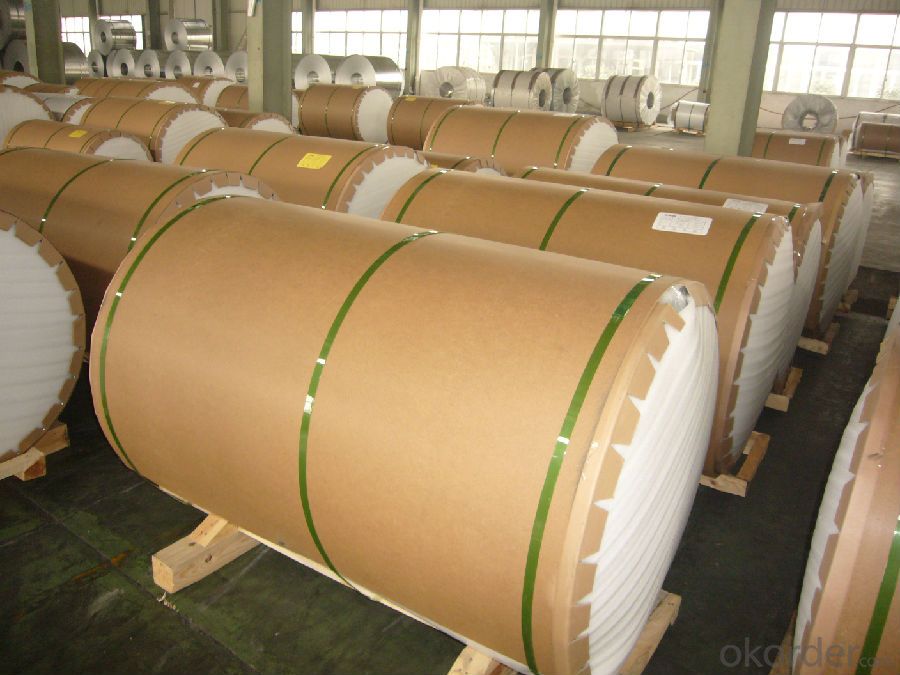
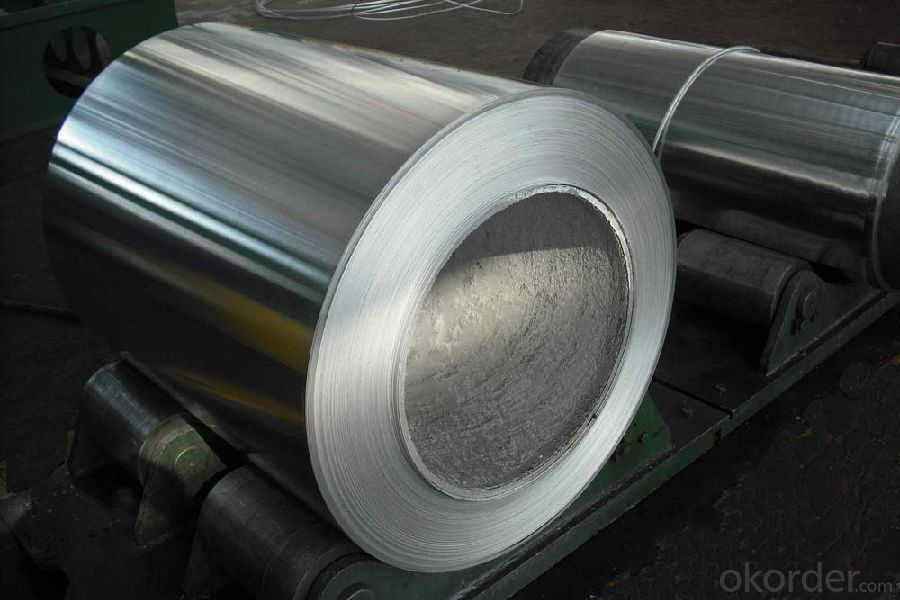
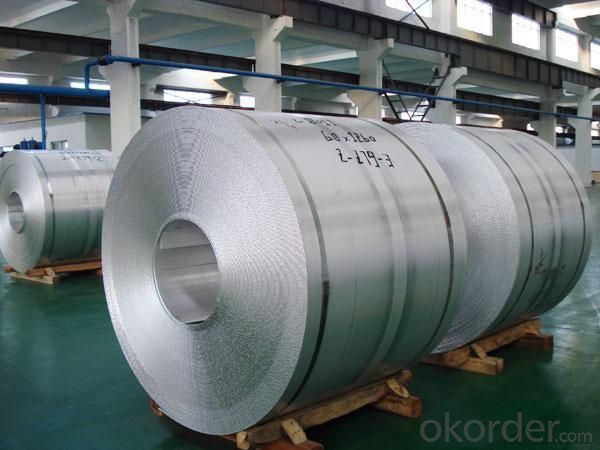
4. Product Specification
| Alloy | Temper | Thickness | Width | Weight |
| AA3003 | H14 | 0.2MM-3MM | 1000MM-1800MM | 2 TONS |
5.FAQ:
What is the quality standard?
---Usually our standard is GB3880-2006
What is the largest width?
---It is 2300mm
What is the MOQ?
---Usually we can accept 80 tons.
- Q: This question asks for a method to determine the quantity of aluminum sheets required for a specific project.
- <p>To calculate the amount of aluminum sheets needed for a project, first determine the area that needs to be covered. Measure the length and width of the surface in question. Multiply these two dimensions to get the total area in square units (e.g., square feet or square meters). Next, consider the thickness and specific requirements of the aluminum sheets, as this may affect the number of sheets needed. Finally, divide the total area by the coverage area of one aluminum sheet (which can be found from the supplier or calculated if you know the dimensions and thickness of a single sheet). Round up to the nearest whole number to ensure you have enough material for your project. Always account for waste and additional material for cuts or adjustments.</p>
- Q: Do 101 aluminum sheets have any specific anti-corrosion properties?
- Yes, 101 aluminum sheets possess specific anti-corrosion properties. This aluminum alloy contains a small amount of iron and silicon, which enhances its resistance to corrosion. Additionally, the formation of a protective oxide layer on the surface of 101 aluminum sheets provides extra protection against corrosion.
- Q: This question asks for methods to clean aluminum sheets to preserve their appearance.
- <p>To clean aluminum sheets and maintain their appearance, follow these steps: 1. Use a mild detergent mixed with warm water to create a cleaning solution. 2. Gently scrub the aluminum sheets with a soft cloth or sponge to avoid scratching the surface. 3. Rinse thoroughly with clean water to remove any detergent residue. 4. Dry the sheets immediately with a soft, dry cloth to prevent water spots. 5. For stubborn stains, use a non-abrasive cleaner specifically designed for aluminum. 6. Avoid using harsh chemicals or abrasive materials that can damage the aluminum's finish. Regular cleaning will help preserve the appearance and longevity of aluminum sheets.</p>
- Q: What characteristics distinguish aluminum sheets from other types of sheets?
- <p>Aluminum sheets are lightweight, corrosion-resistant, and have excellent thermal and electrical conductivity. They are commonly used in construction, automotive, and packaging industries. In contrast, other types of sheets, such as steel sheets, are heavier and stronger but less resistant to corrosion. Plastic sheets are lightweight and flexible but have lower strength and thermal conductivity. Copper sheets offer high thermal and electrical conductivity but are more expensive and less resistant to corrosion than aluminum. Each type of sheet has unique properties that make it suitable for specific applications.</p>
- Q: What are the maximum dimensions of aluminum sheets?
- The maximum dimensions of aluminum sheets can vary depending on the manufacturing capabilities of different suppliers. However, in general, aluminum sheets are available in a wide range of sizes to meet various application requirements. Commonly, the maximum width of aluminum sheets can be up to 72 inches (6 feet), while the maximum length can reach around 240 inches (20 feet). These dimensions can provide ample material for a wide range of projects, including construction, manufacturing, and industrial applications. It is important to note that specific suppliers may have their own limitations, so it is advisable to consult with them directly to determine the maximum dimensions available for aluminum sheets.
- Q: What are the different methods of surface engraving aluminum sheets?
- There are several methods of surface engraving aluminum sheets, each offering unique advantages and suitable for different applications. 1. Mechanical Engraving: This traditional method involves using a rotating cutting tool, such as a milling machine or a router, to physically remove material from the surface of the aluminum sheet. It is a precise and versatile technique that can create intricate designs and deep engravings. Mechanical engraving is commonly used for signage, branding, and decorative purposes. 2. Laser Engraving: This modern and highly precise method uses a laser beam to vaporize or melt the surface of the aluminum sheet, creating a permanent mark. Laser engraving offers great control over the depth, speed, and intensity of the engraving, allowing for detailed and accurate results. It is widely used in industries like aerospace, automotive, and electronics for part identification, serial numbers, and barcodes. 3. Chemical Etching: Also known as chemical milling or photochemical machining, this process involves coating the aluminum sheet with a photosensitive mask and exposing it to UV light through a stencil or artwork. The exposed areas are then chemically etched, removing the material and creating the desired design. Chemical etching offers high precision, repeatability, and the ability to engrave very thin lines or complex patterns. It is often used in electronic components, nameplates, and decorative applications. 4. Diamond Drag Engraving: This method uses a diamond-tipped stylus that is dragged across the surface of the aluminum sheet, scratching or indenting it to create the engraving. Diamond drag engraving is commonly used for industrial applications, such as part identification and serial numbering, as well as for creating durable and long-lasting markings on aluminum sheets. 5. Rotary Engraving: In this technique, a rotating cutting tool is used to remove the material from the aluminum sheet, similar to mechanical engraving. However, rotary engraving is typically used for larger and thicker aluminum sheets and is often employed in industrial settings for marking, labeling, and identification purposes. Each of these methods has its own advantages and is suitable for different applications, so choosing the right engraving method for aluminum sheets depends on factors such as the desired design, level of detail, durability requirements, and the intended use of the engraved product.
- Q: Can the aluminum sheets be used for manufacturing door frames?
- Indeed, door frames can be manufactured using aluminum sheets. Aluminum, a versatile material, finds extensive usage in the construction field owing to its robustness, longevity, and lightweight nature. It can be conveniently molded, curved, and joined through welding processes to fashion door frames of diverse dimensions and styles. Furthermore, aluminum possesses exceptional resistance against corrosion, rendering it suitable for both indoor and outdoor applications. In conclusion, employing aluminum sheets for the production of door frames represents a sensible and widely favored option within the construction sector.
- Q: How do I join aluminum sheets together?
- One common method to join aluminum sheets together is through welding. Aluminum can be welded using various techniques such as Tungsten Inert Gas (TIG) welding or Metal Inert Gas (MIG) welding. These methods involve melting the edges of the aluminum sheets and fusing them together using a filler material. Another option is using adhesives specifically designed for aluminum bonding. These adhesives create a strong bond between the sheets when applied correctly. Additionally, mechanical fastening methods like riveting or bolting can also be used to join aluminum sheets together. The appropriate method depends on factors such as the specific application, desired strength, and aesthetic requirements.
- Q: Can aluminum sheets be used for chemical reactors?
- Yes, aluminum sheets can be used for chemical reactors. Aluminum is often chosen for its corrosion resistance, lightweight properties, and ability to withstand high temperatures, making it suitable for various chemical processes in reactor applications. However, it is important to consider the specific chemical reactions and conditions involved, as certain chemicals or extreme conditions may chemically react with or degrade aluminum.
- Q: Are aluminum sheets resistant to abrasion?
- Yes, aluminum sheets are generally resistant to abrasion. Aluminum is known for its durability and strength, making it resistant to scratches or damage caused by abrasion. However, the level of resistance may vary depending on the specific alloy and thickness of the aluminum sheet. Thicker sheets with higher alloy content tend to provide better resistance against abrasion. Additionally, the surface finish of the aluminum sheet can also play a role in its resistance to abrasion. Overall, aluminum sheets are a reliable choice when it comes to withstanding abrasion in various applications.
Send your message to us
Re-Passed Aluminum Sheets Portland SMS Rolling Aluminium Coils
- Loading Port:
- Shanghai
- Payment Terms:
- TT OR LC
- Min Order Qty:
- 5 m.t.
- Supply Capability:
- 50000 m.t./month
OKorder Service Pledge
OKorder Financial Service
Similar products
Hot products
Hot Searches
Related keywords
